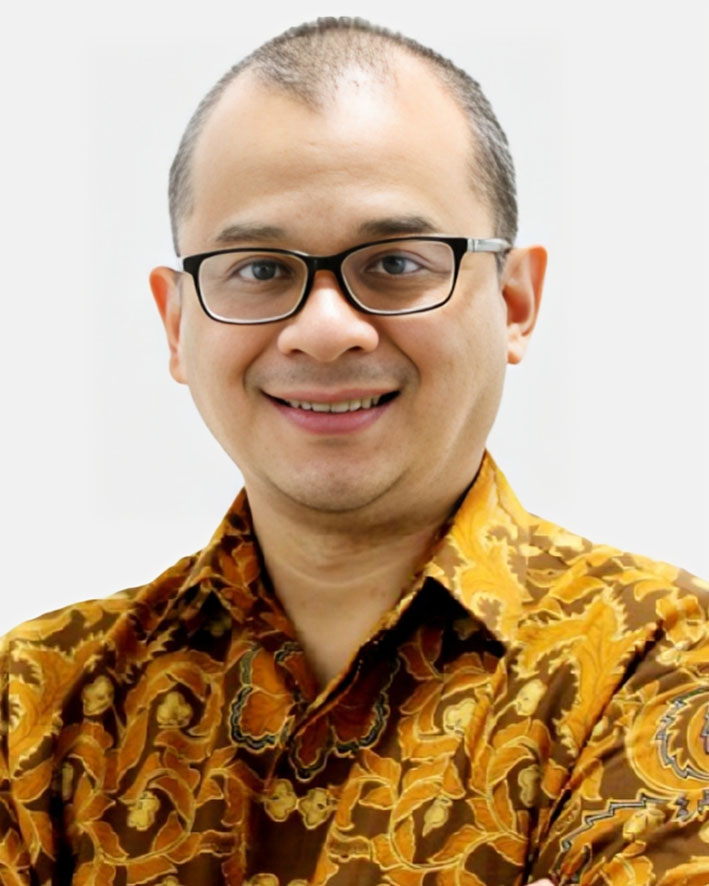After a trying few years which featured large claim payouts on the part of reinsurers, Indonesia’s reinsurance industry is looking to improve its stability and sustainability. Actions the industry is taking include maintaining T&C restrictions, applying limitations and implementing loss prevention control.

Since 2022, Indonesia’s reinsurance industry has been aiming to improve its overall stability, particularly for treaty proportional programmes, according to JBBoda Viva Indonesia Reinsurance Brokers president director Ricky Natapradja.
“This effort includes refining terms and conditions (T&C) and implementing loss prevention control for portfolios with negative results,” Mr Natapradja said.

Association of Indonesian Qualified Insurance and Reinsurance Brokers chairman Bambang Suseno said that Indonesia professional reinsurers (IPR) have been “trying to fix the industry”.
“(As) the [results are] still not good and below [expectations], the concern is that this is not a sustainable condition,” Mr Suseno said.
To do so, IPR have been pushing better T&C on treaty and facultative by applying several limitations, exclusions, lower reinsurance commissions, increasing pricing and implementing loss participation clauses, he said.
Mr Suseno also said that Otoritas Jasa Keuangan (OJK), Indonesia’s regulator, is “pushing (re)insurers to increase financial strength by applying respective minimum capital in 2026 and 2028”. He believes that OJK’s aim is to strengthen (re)insurers in order to support the industry.
In-depth trends
Health insurance

There has been a “trend of increasing loss ratio in health insurance business post-COVID”, specifically in 2023, according to Indonesia Re president director Benny Waworuntu. He said that it is of national concern, and that the reinsurance industry “needs to take immediate action” to ensure sustainability of the health insurance business line.
Mr Waworuntu also noted that fixing the premium inadequacy, setting proper T&C and controlling medical cost may help.
The issuance of the Circular, SEOJK 05/2022 has also resulted in traditional protection replacing unit-linked products.
“This shift is expected to continue impacting product development. Moving forward, it is hoped that new product development will still uphold premium adequacy and sustainable terms and conditions for the market,” he said.
Property business and retro
Reinsurers, including Indonesia Re, have reduced reinsurance commission levels on a facultative basis “to manage the substantial increase in retrocession costs”, said Mr Waworuntu.
P&C treaty
As the country’s treaty market is dominated by proportional programmes, most reinsurers tend to continuously review the programme’s treaty structures, reinsurance commission levels, limit co-insurance practice and exclude some complex risks, among other factors, he believes.
For non-proportional programmes, Mr Waworuntu said that “reinsurers will continue to do pricing correction”.
In 2024, most reinsurers continued the underwriting policies and approach from 2023, according to Mr Waworuntu.
He also noted that for the underwriting year 2024, most reinsurers implemented full reporting, whereby the reinsured was required to provide premium and claims bordereaux in each statement.
Factors behind the trends
Large claims payouts from reinsurers from 2020 and before was a factor behind these trends, according to Mr Suseno.
Mr Waworuntu agreed, saying that most treaty businesses are still suffering from these losses. Reinsurers are still seeking recovery, he said, as the losses occurred when retrocession prices also increased.
“This [has] also worsened the hardening market effect that came late to the local (re)insurance market,” he said.
Mr Suseno highlighted low terms and premiums on the policy level and the number of insurers, direct and reinsurance brokers as well.
Moreover, according to Mr Natapradja, local insurers still require proportional programmes, though from “the reinsurance perspective, many insurance companies have unbalanced proportional treaties”.
Health insurance
The health insurance business line experienced an increased in healthcare costs, said Mr Waworuntu. Factors he cited for the rise included inflation, changes in an insured’s behaviour regarding the utilisation of health insurance benefits for treatments delayed during the pandemic and the lack of standardised medical pathways.
Property business
According to Mr Waworuntu, the reinsurance market in property is still hardening on the global market.
“This (has) caused upward pressure on costs and influenced local market dynamics,” he said.
Cedant concerns
A concern among insurers “is the difficulty in finding supporting backup capacity for proportional programmes, restrictions imposed have a significant impact on budget targets and implementation of the co-insurance panel that affects underwriting acceptance”, said Mr Natapradja.
Long term
Over the long term, cedents will be concerned by reinsurer capital position, as well as future regulations concerning the minimum retention and reinsurance placement, according to Mr Waworuntu.
He also noted that cedants with strong capital and overseas reinsurance support will be in better positions.
Mr Suseno believes that in the long term, insurers may need support at competitive terms from IPR.
Short term
More specific to the short term, said Mr Waworuntu, cedants may have to anticipate reinsurer equity and financial positions after the upcoming new capital requirement and IFRS17 implementation, alongside consequences of “recent market losses above $100m”.
Insurers also expect IPR to apply “the same limitation/restriction to all cedants”, Mr Suseno said. He believes that this could result in some insurers becoming less competitive than others and losing business.
Pricing expectations
What are expectations for pricing at the upcoming 1/1 renewals?
Mr Natapradja believes that prices will rise.
“Everything depends on the risk accumulation value and the loss ratio,” he said.
Mr Suseno agreed, saying that there will be a slight increase in price, and that one of the contributing factors was higher retrocession prices.
On the other hand, Mr Waworuntu expects prices to be lower, as compared to the previous two years, due to “improvements in the initial terms and for [retro]”, as well as in upfront terms.
He also believes that despite decreased or flattened pricing in treaty business, local reinsurers would strengthen the structure in every programme and revamp its T&C.
T&C expectations
Mr Natapradja said that T&C would be unpredictable due to previous restrictions affecting insurer performance.
“If IPR remain committed to their vision of improving the Indonesian insurance industry, they will likely maintain the current T&C restrictions,” he said. Despite this, he hopes for better T&C that would provide a win-win solution for both parties.
According to Mr Suseno, IPR would apply tight T&C. He also raised the possibility that there will be another limitation for electric vehicles (EVs) in motor and cargo insurance, due to large claims.
“[Indonesia’s] cargo vessels are not designed to carry EVs. Major overseas reinsurers (have) already excluded EVs from cargo treaty. This can be challenging for local Insurers, as the Indonesian government [is promoting] the use of EVs,” he said.
Mr Waworuntu believes that T&C for life reinsurance should be reviewed for business sustainability.
“The T&C should make sure that, in terms of underwriting assessment, it should be properly applied and also economically acceptable,” he said.
He also expects T&C to remain consistent in the property sector.
“In P&C reinsurance, T&C would still be reviewed and adjusted. This would include the limitation of co-insurance practice and some limitation in the coverage and property occupations, especially those affected by large losses,” he said.
Capacity expectations
According to Mr Suseno, capacity is “back to normal” as some programmes renewed on 1/7 were over-placed.
There will be available capacity for 1/1, Mr Natapradja believes.
“However, the amount of capacity provided by reinsurers will depend on the completeness of data submitted by the cedant and the agreement reached regarding T&C such as limit, clauses and wording and the local retro capacity”, he said.
Mr Waworuntu agreed and said that he expects cedants would anticipate and prepare for upcoming renewals with “more robust renewal data”.
“The pricing might be flattening or decreasing, given the performance of the treaty programme, but at the end, reinsurers might still implement some adjustments to suit the overall results,” he said. A